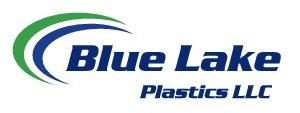As we get closer to spring and begin to think about green grass and grazing cattle, it is a good time to evaluate your mineral supplementation program. It takes more than just energy and protein to ensure optimal health and performance of beef cattle. Vitamins and minerals are required to maintain vital biological processes, and even moderate deficiencies can have significant economic impacts.
It is well accepted native rangeland is deficient in vitamins and minerals, and supplementation under these circumstances is necessary. However, it is important to recognize cattle grazing managed pastures, cereal grains and hay fields, which often include high-quality forages, also require mineral supplementation.
It may be tempting to assume cows or stocker calves grazing tall, lush forages are getting all the nutrients they need. While this might be true for protein and energy, it is unlikely all mineral requirements are being met.
A frequency analysis was conducted on 2,631 pasture samples sent in by Agri-King clients, over a five-year period, to evaluate the proportion of pastures which fail to meet minimum NRC requirements for macro- and trace minerals (Table 1).

The pasture samples were analyzed for minerals at Analab (Fulton, Illinois) using Panalytical X-ray spectrometry. Pastures were composed of grasses, legumes, grass-legume mixes, cereal grains and brassicas. All months of the year were represented, but 92 percent of the samples were taken during common grazing months (April through October). Fifteen states were included in the analysis, with the majority of samples coming from the Upper Midwest and Northeast.
Most pastures provided adequate concentrations of calcium (Ca), phosphorus (P), potassium (K) and sulfur (S) for mature cows. However, 30 percent of these pastures had Ca-to-P ratios outside of the recommended ratios of 1.5-to-1.0 to 6.0-to-1.0, with most providing low Ca relative to the level of P. When Ca-to-P ratios are below 1.5-to-1.0, water belly (urinary calculi) can occur, although this is most prevalent in a feedlot setting.
Sodium (Na) had the greatest frequency of deficiency of any mineral in the pasture samples evaluated, where 70 to 87 percent of pastures were deficient. Na (and chlorine) is necessary for cellular volume, pH and the balance of body fluids.
Due to its relationship with water balance in the body, a deficiency in Na can result in decreased milk production in lactating cows. Salt should always be included as part of a mineral program and is often used to encourage and control the consumption of free-choice mineral products.
Magnesium (Mg) was deficient for lactating cows in 24 percent of the pastures tested. Pastures with low Mg and Na, and high K concentrations, are where issues with grass tetany (hypomagnesemia) are most likely to occur. Cool-season grasses grazed in early spring and wheat pasture in the fall pose the most risk.
The “grass tetany risk ratio” of K+/(Ca+++MG++) can be used to evaluate the potential risk of grass tetany in a forage. When the ratio is greater than 2.2, the forage has significant potential to cause grass tetany. Of the pastures evaluated, 12 percent were found to have an elevated risk for grass tetany; however, 51 percent of the risky pastures were vegetative cereal grains (wheat, oats and triticale).
Cattle have a daily requirement for Mg, as it is not stored in the body. Therefore, it is important cattle on pastures with an elevated risk for tetany receive a high-Mg mineral and producers ensure daily consumption of the mineral supplement.
Copper (Cu) is the most common trace mineral deficiency in grazing cattle. Indications of Cu deficiency most often include reduced fertility, depressed immunity (for example, increases in cases of summer pneumonia or scouring calves) and dulling of hair coat.

Not surprisingly, 52 percent of pasture samples were found to be deficient in Cu (less than 10 ppm). Even if dietary levels of Cu are adequate (10 ppm), secondary deficiencies are likely if elevated levels of S, zinc (Zn), iron (Fe) or molybdenum (Mo) are present.
These minerals form complexes with Cu and compete for absorption sites, resulting in less available Cu for the animal. S and Fe were found at levels high enough to impact Cu absorption in 8 and 12 percent of the pastures evaluated.
Mo was only evaluated in a small percentage of the pasture samples; however, the National Animal Health Monitoring System (NAHMS) found 9 percent of forage samples taken from the major cow-calf-producing states contained Mo levels high enough to impact Cu absorption. Due to the complexities of mineral interactions, Cu should be supplemented in a form that is bioavailable.
Copper oxide is commonly found in inexpensive mineral supplements; however, this form of Cu is poorly absorbed and may not help to correct a primary or secondary deficiency. Sulfate and chloride forms have greater availability than oxides but may still complex with other minerals in the rumen, hindering absorption. Look for chelated or hydroxy sources when choosing a trace mineral supplement to ensure optimal bioavailability.
Zn is critical to the function of the immune system, enzyme systems and hoof health. Under stressful conditions, cattle deficient in Zn may have greater incidence of illness, lower responses to treatments and longer recovery times compared to cattle with adequate Zn status. Like Cu, absorption of Zn can be negatively impacted by high levels of Fe. Only 6 percent of pastures evaluated were found to be deficient in Zn.
However, research has indicated even when calves are born with adequate Zn status, they may approach marginal to deficient Zn levels by weaning, due to rapid body growth and low Zn concentrations of milk. This can have major implications when it comes to the effectiveness of vaccines, health and productivity of calves as they enter backgrounding yards or feedlots.
Manganese (Mn) has a direct relationship with fertility, and deficiencies of this trace mineral can result in poor conception rates and a prolonged calving interval. Pregnant and lactating cows have a greater requirement for Mn compared to growing cattle, and 22 percent of the pastures tested were deficient in Mn (less than 40 ppm).

Selenium (Se) was not analyzed; however, areas of widespread forage Se deficiency and excess are well-known. The Pacific Northwest, the Great Lakes states, the Northeast, the Atlantic seaboard and Florida are regions where Se tends to be deficient in forages. The NAHMS found 63.6 percent of forages sampled were marginal or deficient for Se. Selenium yeast is a highly bioavailable form of Se and should be used in areas with known deficiencies.
The information from this exercise reinforces the need for macro- and trace mineral supplementation for growing cattle and mature cows grazing managed pastures, cereal grains and hay fields.
Marginal deficiencies can reduce growth, reproduction and impact health, even if cattle show few clinical signs of deficiency. Finally, other minerals may be present at high enough levels to negatively impact absorption of Cu and Zn; therefore it is important consider the bioavailability of the trace minerals in your program.
Tips for evaluating your mineral program:
- Calculate current mineral intake of animals to see if intake matches up to the instructions on the feed tag. Make sure your cattle are consuming the recommended amounts.
- Test forages, feeds and water for mineral content; this is a cheap and easy starting point. If there are unresolved deficiencies, talk to your vet about testing animals for trace mineral status.
- Understand what types of trace minerals (oxides, sulfates, chelates, hydroxys) are in your current products and what the bioavailability of those minerals are.
- Work with a nutritionist to develop a mineral program right for you and your herd. There’s no single solution for every operation.


-
Aimee N. Hafla
- Beef Cattle Nutritionist
- Agri-King Inc.
- Email Aimee N. Hafla







